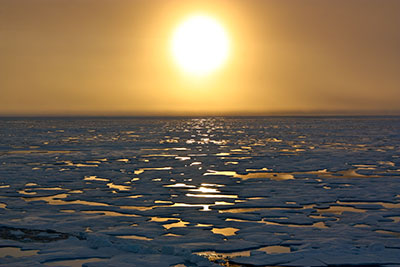
Purpose
This challenge aimed to compute the change of key ocean characteristics over past 10 to 100 years, temperature, internal energy, ice coverage and phytoplankton abundance (top three species), to assess whether the available marine data sets available at the time were appropriate for use cases, as well as to indicate any gaps which existed in the EU data collection framework.
Abstract
The Climate challenge attempted to follow up on the evolution of key ocean characteristics, in the North Atlantic as follows:
- Average temperature
- Change at surface, 500 metre depth and bottom on a grid over past 10 years (annual average) and 50 years (pendatal average)
- Time series at sea surface and bottom
- Internal energy of sea
- Time-series of average annual related to heat storage
- Time-series of average annual related to eddy kinetic energy
- Ice coverage
- Average extent over past 5 years, past 10 years, past 50 years, past 100 years plotted on maps
- Total ice cover in sea (kg) over past 100 years plotted as time series
- Abundance of phytoplankton expressed as time series
- Three most abundant species
- The North Atlantic had been subdivided geographically in recognition that phytoplankton species are not homogeneous across the Ocean basin and also that data coverage will vary geographically.
Team involved
CEFAS (lead), Marine Institute, HR Wallingford
Data Availability
Most of these datasets are easily discovered and can be used for academic study, though there are a number of cases where the data policy is not clear and require registration. One dataset has a policy that makes independent use of the data impossible. The intellectual property embedded within the datasets tends to vary across the datasets and this has an impact on availability. Some are available and simple to use without any need to contact the data owner (temperature) while others (eg plankton) may require additional expertise or involvement to enable successful use and/or access to the dataset.
For temperature in particular there are multiple data sources beyond those investigated and these tend to be collated products made available by international sources. The continuous improvement in new platforms and products alongside data centres with project lifetimes means that the sources change over time, and make using longterm stable data collation centres and exercises the most robust access point for these data.
The biotic data required for the Phytoplankton challenge is harder to access and to use. The specification of the challenge to find the abundance of the 3 most common species of phytoplankton means that availability and appropriateness are co-dependant as defining the most common species first needs the data.
The ice data sets tend to be focused on the Arctic region with availability for the North Atlantic less of a requirement. The availability of data for scientifically appropriate challenges is generally high for the climate topics, some of the limited availability are associated with the specification of the challenge where the calculation specified has no futher applicability.
Access to products
The challenge partners ("the producers") were commissioned to perform a number of tests to evaluate marine data according to set user requirements. The table below enables:
- to discover :
- the Data Product Specifications (DPS) which describe data products in terms of user requirements according to ISO19131 principles and provide the basis for the quantitative assessment of the Products (Quality measures and scope of application) and of the Upstream Data sets supplied to- and used by- the challenges to create them.
- the Results (TDP) which describe the Data Product created together with the quantitative assessments (Quality measures and indicators) and the expert opinion.
- to download the products (shapefile, excel, pdf) on an "as is" basis. All downloads suppose acceptance of the use limitations described in the “Expert opinion” and the “Legal constraints” accessible using the link to the Results.
-
to view the spatial data products (Maps) using a webGIS.
Data product were scored by experts from 1 to 5, resp. inadequate to excellent. The score is mentioned in the last column. “Good” means the Product was achieved to at least 50% of the requirements. “Inadequate” means “Impossible to produce or fails to meet all the objectives (not usable)”.
|
Product 1 - Surface temperature time-series (1915-2014)
|
>Download
|
|
Score: Excellent
|
|
Product 2 - Bottom temperature time-series (1915-2014)
|
>Download
|
|
Score: Limited
|
|
Product 3 - Internal Energy time-series (1915-2014): Heat and Kinetic
|
>Download
|
|
Score: Limited
|
|
Product 4 - Phytoplankton abundance (top 3 species) time-series (1915-2014)
|
Not created
|
|
Score: Inadequate
|
|
Product 5 - Total ice cover (1915-2014)
|
>Download
|
|
Score: Limited
|
|
Product 6 - 10 year (2005-2014) change in temperature
|
>Download
|
|
Score: Good
|
|
Product 7 - 50 year (1965-2014) change in temperature
|
>Download
|
|
Score: Good
|
|
Product 8 - Ice Occurence (1915-2014)
|
>Download
|
|
Score: Good
|

